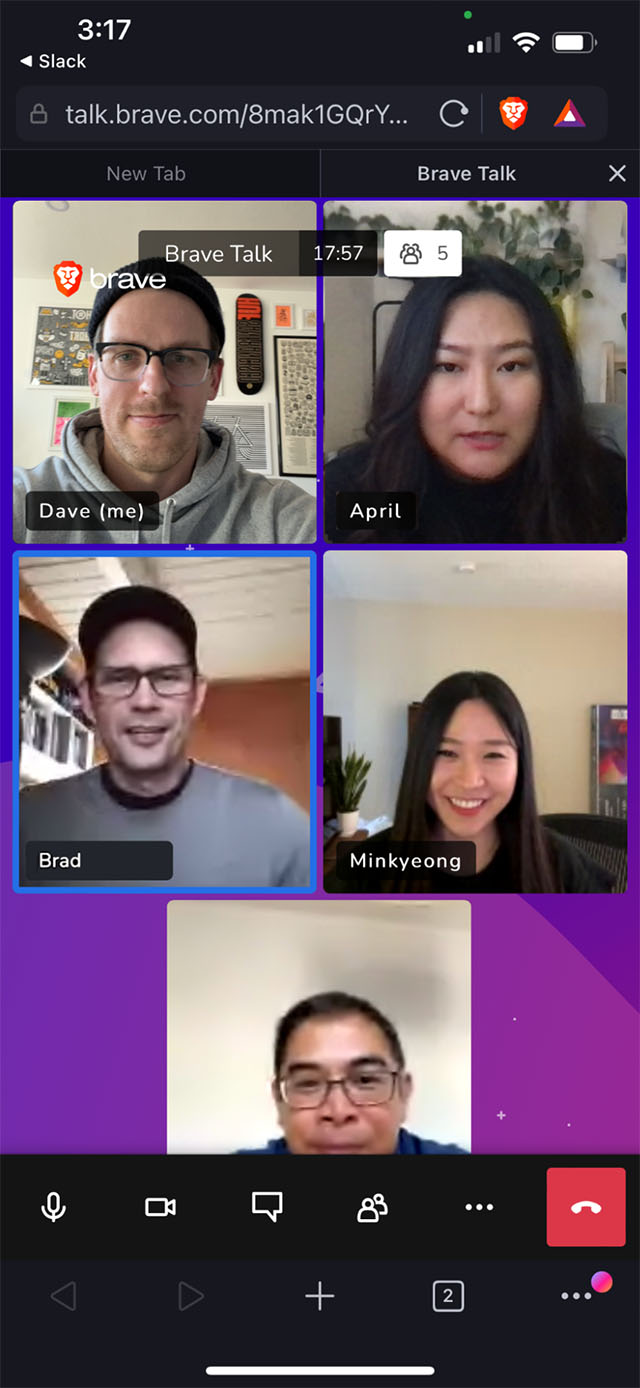Brave announces Brave Talk extension, bringing one-click scheduling to Google, Proton, and Skiff Calendars
Numerous new features also added, including free and unlimited calls for up to 4 people
Today, Brave is announcing several new features for Brave Talk, our privacy-preserving video conferencing product available directly in the Brave browser. This includes the Brave Talk extension for Google, Proton, and Skiff calendars, which makes it easier than ever to schedule private calls with colleagues and friends via our desktop browser.
The Brave Talk extension is available for download in the Chrome Web Store. Brave desktop users who download the calendar extension can add Brave Talk links to a calendar invite with a single click.

Since the Brave Talk launch this past September, calendar integration has been a highly requested feature. Google, Proton, and Skiff Calendars are three of the most widely used scheduling and calendar applications; Google is the most commonly requested integration by name.
Brave recently passed 50 million monthly active users, and Brave Talk, along with Brave Search and Brave News, are part of Brave’s suite of privacy-preserving tools.
Protecting your privacy
Unlike other video conferencing providers, which can involve collecting and sharing user data without adequate transparency and control, Brave Talk is designed to not share user information or contacts by default. Brave Talk is designed to serve you, not track you, and is designed for unlinkability. This privacy protection carries through to the Brave Talk calendar extension.
More features for free and premium
Several new features were also added to Brave Talk, most notably the ability to include up to 4 people (up from 2) to free calls. Brave also offers a premium version of Brave Talk for $7/month for users interested in hosting calls for larger groups or meetings with hundreds of participants. The premium version provides call recordings and hosting tools (such as participant muting and entry passcodes). The new features include:
- Advanced moderation, which allows the moderator to restrict audio and video access for any number of participants
- Participant reactions with sounds, including laughing, clapping, and raised hands
- Breakout rooms
- Polls
- Options for performance settings
- An improved tile view layout
Brave Talk has always featured video groupwatch and YouTube livestreaming on both the free and premium versions.
How to start a call
Brave browser users can easily start a Brave Talk call from the desktop version or the mobile apps. On desktop, simply open a new browser tab and click the Brave Talk icon. On mobile, simply tap the menu bar ("…") and then tap Talk. Alternatively, both desktop and mobile users can visit talk.brave.com. Calls must be initiated from the Brave browser, but invitees can join calls from any modern browser.
Brave Talk is powered by the Jitsi as a Service open source video meeting platform from 8×8, a leading integrated cloud communications platform provider (NYSE: EGHT), using WebRTC open source technology that enables developers to embed HD video directly into the browser.


This post was updated August 8, 2023 to reflect that the Brave Talk calendar extension is now available on Proton and Skiff, in addition to Google calendar. We’ll also be adding support for more calendar platforms in the near future. To reflect this expanded availability, we’ve changed the extension name from “Brave Talk extension for Google Calendar” to “Brave Talk for Calendars.” Check the Chrome Web Store to download, or the Brave help center to learn more.







